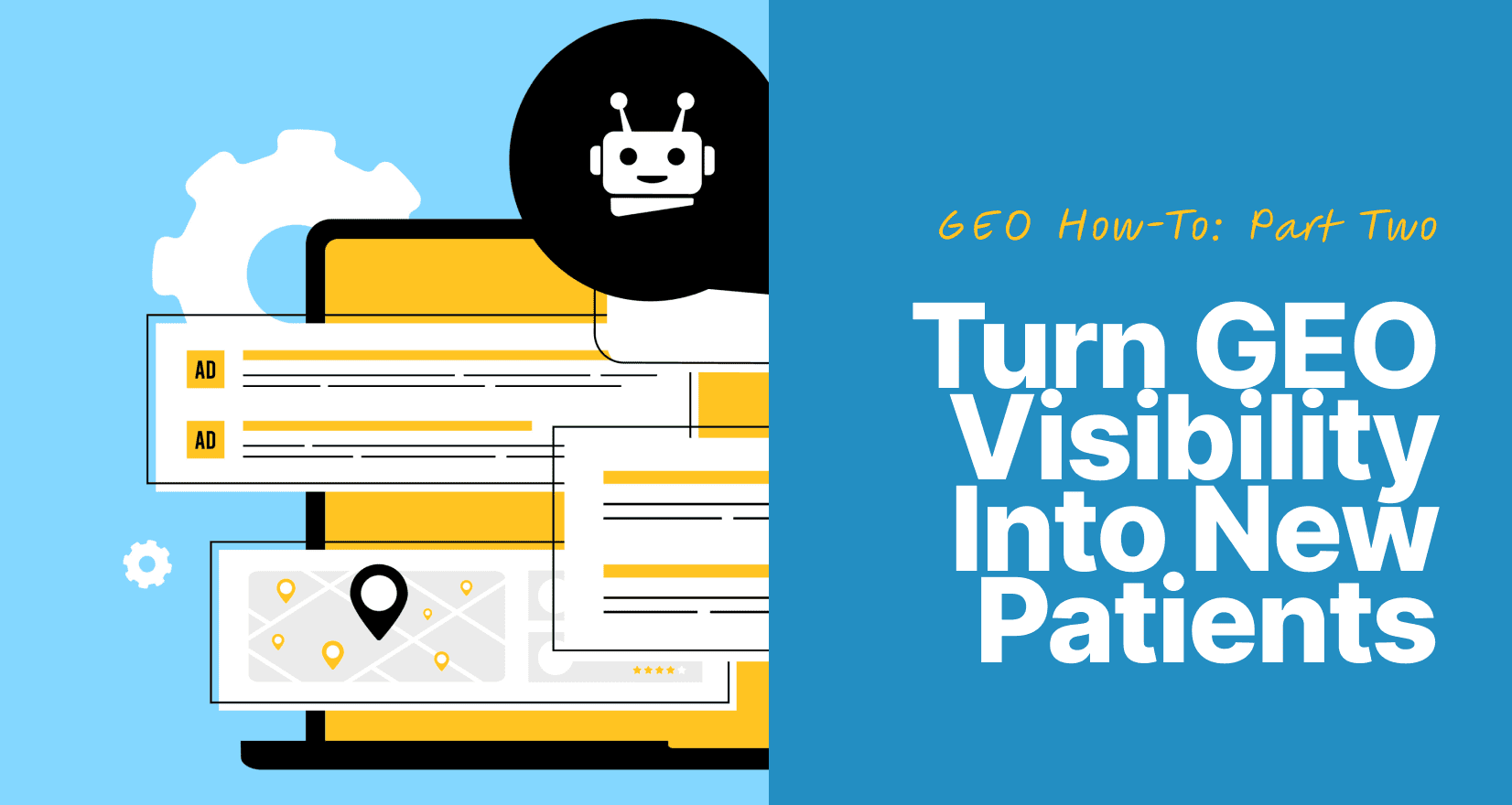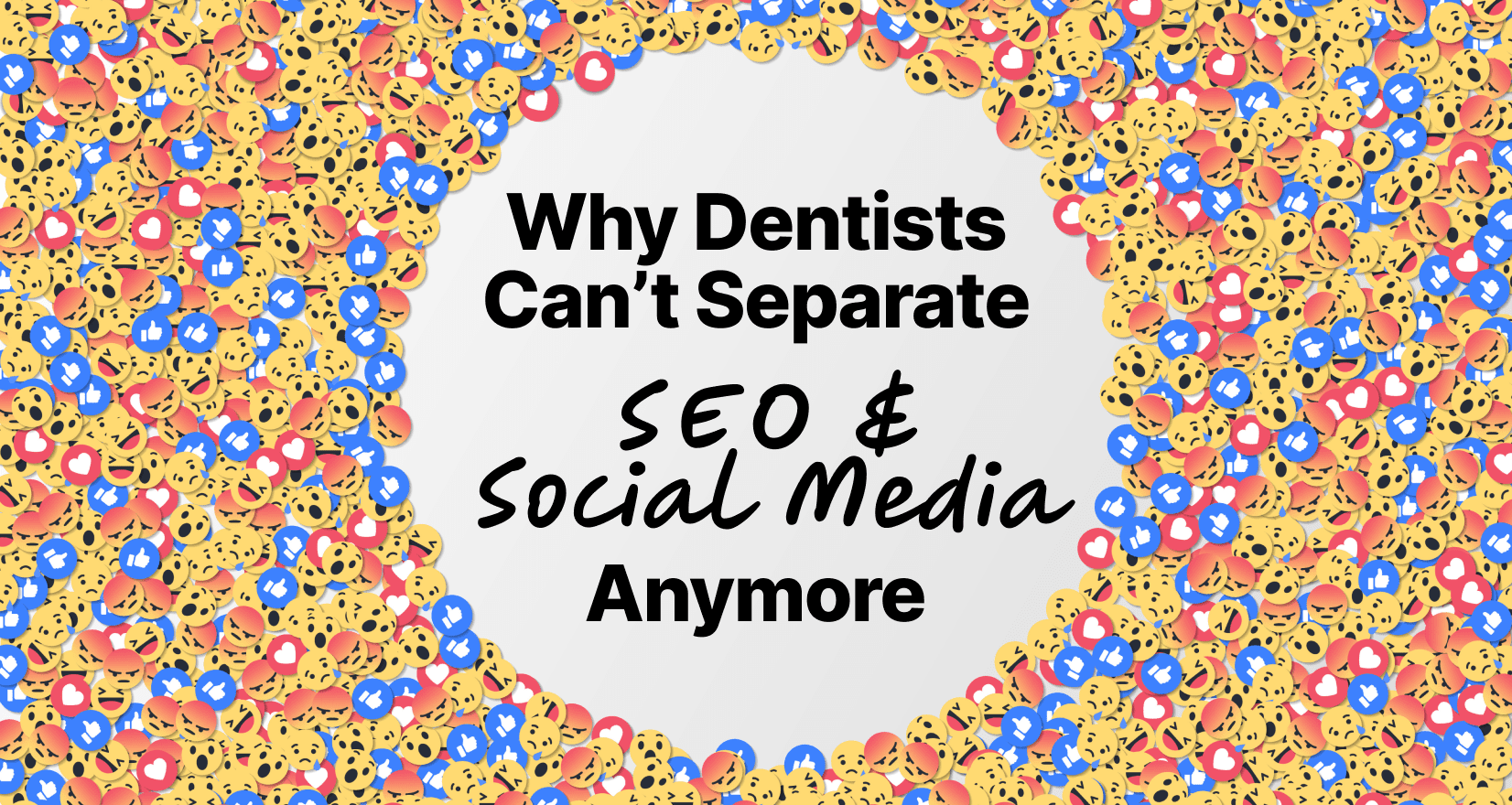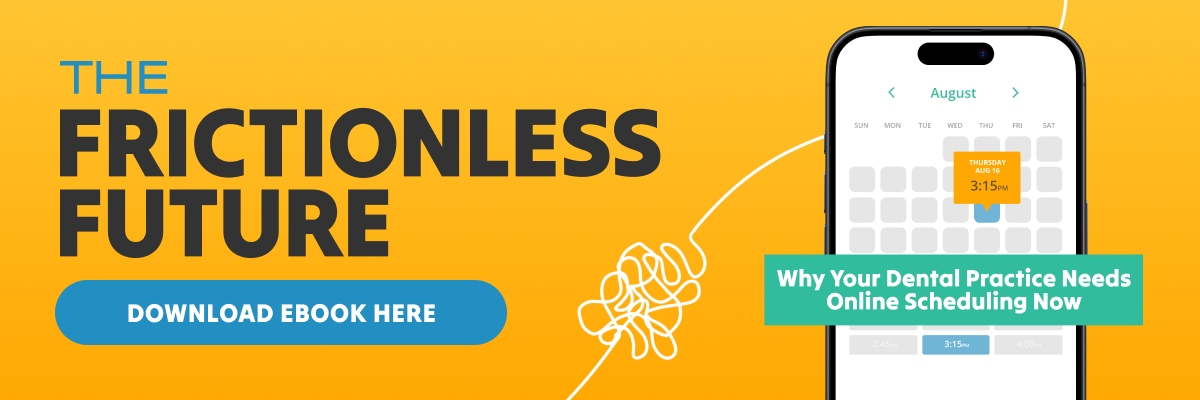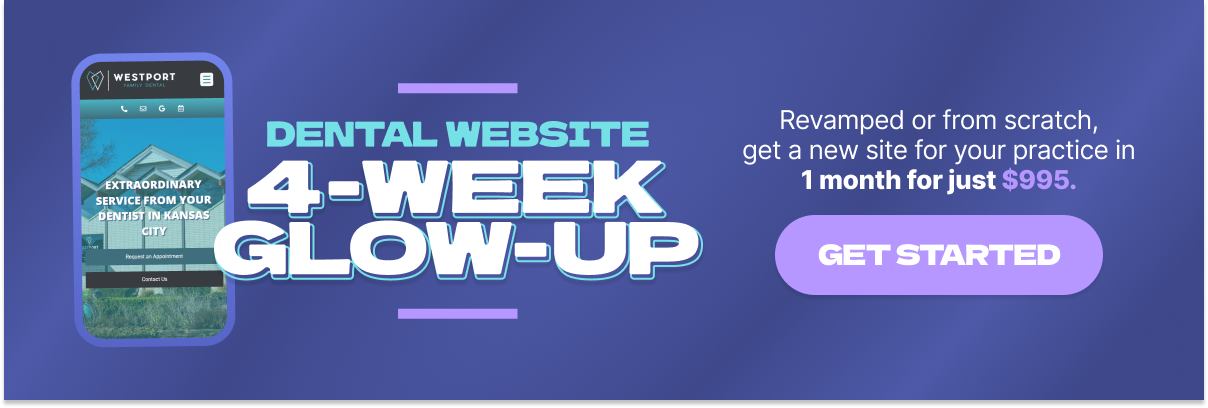
Your GEO’s Working… Kind Of. Let’s Tune It Up.
If you read our last post, Is Your Dental GEO Working? 4 Metrics Every Practice Should Track, you know how to measure whether your generative engine optimization (GEO) strategy is doing its job. We went over share of search, brand demand and buyer intent, category entry points (CEPs), and measuring visibility using Google Search Console. Handy stuff.
But once you’ve got the data, the next question is:
How do you actually make your GEO better?
This second part of the optimization equation focuses on your action plan, and we’re here to give you practical, brand-building strategies to help your practice earn trust from both humans and AI. We’ll talk about how to create content that converts, strengthen your brand signals, and make it ridiculously easy for AI (and patients) to recommend you.
Let’s start with a little more in-depth analysis of why “how-to” content won’t get you new patients from AI search engines.
Why “How-To” Content Doesn’t Fill Your Schedule
Remember the Two-Second Rule? You know, the one that looks at your dental blog and shakes its head in disappointment?
If you’ve been posting for a while, chances are your blog is filled with polite, well-intentioned articles like “How to Brush Better” or “Five Foods That Prevent Cavities.”
They’re educational, sure. But if we’re honest, no one has ever read a flossing guide and immediately booked a cleaning, except for maybe Steve, and he’s a weirdo.
In this golden age of AI-powered search, most “how-to” content never even reaches real people. Tools like ChatGPT or Google’s AI Overview summarize it instantly, often without your name attached. That means your hard work gets absorbed into the AI ether, and your brand gets — well — ghosted. Boo! Very topical for October.
And when your practice does appear in an AI answer or snippet, you have maybe two seconds of attention before the user moves on. Two seconds to make an impression, build trust, and earn that click. Two seconds. The Two-Second Rule. Get it? Great.
So What Works Better?
If you want to gather attention and actually get those sweet, sweet clicks instead of just giving AI an answer to feed to a summary, you need a specific type of dental content. Focus on the stuff that speaks to real patient situations, not abstract education.
Think about the moment someone decides to look for a dentist:
- “I broke a tooth and it hurts, help me, please lord, the pain.”
- “My kid needs braces, and I am broke.”
- “I’m getting married and I want a prettier smile.”
That’s when a potential patient is motivated to book, and that’s when your content needs to meet them.
Turn “How-To” Into “Here’s How We Can Help”
Instead of explaining procedures, show our robot friends how you solve problems:

- Emergency Dentist in [City]: what to do, who to call, what happens next.
- Dental Implants in [City]: clear pricing, photos, and timelines.
- Pediatric Dentistry: calming environment, parent tips, Saturday hours, bountiful prize chest.
- Sedation Options: reassurance for anxious adults and safety info.
Those are the dental web pages that convert because they speak to pain points experienced by real people, not the search habits of plaque enthusiasts. Looking at you, Steve.
So before you publish another “Top 10 Dental Tips” post, ask yourself: Would this make someone pick up the phone?
If not, it’s probably feeding AI, not your appointment book.
Levers That Actually Move GEO for Dentists
Here’s where the magic happens, baked right into the strategies that move your metrics from “meh” to measurable growth. GEO success is about proving your practice deserves to be recommended.
Let’s break down the five levers that actually move the needle.

Credible PR and Community Proof
AI models and patients both rely on social proof. Build credibility through third-party validation:
- Local news coverage — sponsor a school event, host a free dental day, or support a charity.
- Consistent, detailed reviews — aim for new ones every month.
- Local involvement — volunteer work or features in neighborhood newsletters.
These signals tell both people and AI, “Get a load of this guy, this dentist is clearly trusted in their community and also has great hair.”
Distinctive Brand Assets
Much like a toddler navigating nap time, engines and humans love consistency. The clearer your brand signals, the easier you are to recognize.
- Use the same logo, colors, and tagline everywhere.
- Match your tone across platforms. If your website says “gentle care,” don’t sound robotic in blogs.
- Keep your team photos and videos on-brand and current.
When your practice looks and sounds the same everywhere, AI can connect the dots, and a cohesive dental brand can help patients recognize and trust you.
Patient-Centered Case Studies
Skip the jargon. Tell stories about real people.
Frame each case around the patient’s situation, not your procedure:
- “Busy parent fixed a broken tooth in one visit.”
- “Bride-to-be got a confident smile before her wedding.”
- “Anxious patient finally completed treatment with sedation.”
These stories show empathy and credibility, which are two of AI’s favorite trust signals (despite the fact that computers can’t feel empathy. Yet.)

Tighter Copy, Faster Answers
When someone lands on your site from an AI-generated suggestion, they’re already halfway convinced. Don’t make them work for info.
- Start with the answer (“Why yes, we do offer same-day crowns in [City].”).
- Use short paragraphs and bullet points.
- Make your CTAs impossible to miss (“Book now,” “Call today,” “Ask about financing”).
If your site feels fast and clear, visitors convert and AI engines flag it as user-friendly.

Experience Signals That Build Trust
Your website should instantly prove you’re easy to work with.
Make sure it clearly shows:
- Accepted insurance and payment options
- Hours and after-hours instructions
- Online booking or texting options
- Authentic patient reviews and team photos
Those “proof points” are what convince both people and algorithms you’re the right choice.
Quick Adjustments to Boost GEO (Without Losing Your Mind)
Those are some nice and shiny strategies up there, but implementation isn’t always simple. Here are fast, practical tweaks that level up your GEO without a full rebrand:
Claim and Polish Your Profiles
- Complete your Google Business Profile (photos, Q&A, services, reviews).
- Sync your info across directories (Healthgrades, Yelp, Zocdoc, Facebook).
Build “Reference-Worthy” Pages
Create pages AI feels safe citing. Great bets include emergency care, financing, sedation, or insurance guides that align with trusted sources like the ADA or CDC.
Add Short YouTube Videos
Record quick clips of the doctor answering real questions (“What’s the same-day crown process?”). Embed them on service pages. AI loves YouTube citations.
Boost Review Signals
Ask for reviews with keywords that reflect your services (e.g., “gentle cleaning,” “Invisalign,” “same-day crown”). Reply to every review; it shows you care.
Build Local Relevance
Add short pages for nearby neighborhoods or landmarks, and mention your proximity to schools, hospitals, or shopping centers. GEO thrives on specificity.
The Takeaway: GEO Rewards Proof, Not Posts
If you remember one thing from this post, let it be this: GEO rewards proof, not posting.
You don’t have to out-write your competitors with impeccable Shakespearean-level blog posts. Create content that shows real patient results, invest in community proof, and make your website so clear that even an AI can tell you’re the right choice.
That’s how you turn visibility into new patients.
Frequently Asked Questions
How can I improve my dental GEO strategy?
Focus on proof, not posts. Strengthen your local reputation, earn consistent reviews, create patient-centered service pages, and make your website clear and trustworthy. GEO rewards brands that are easy for both humans and AI to recommend, not those that simply publish more content.
Why doesn’t “how-to” content help dental GEO?
“How-to” articles rarely lead to appointments because AI tools summarize them instantly. Instead, build content around real patient needs, like emergency visits, cosmetic goals, or sedation options. That’s what drives clicks, trust, and new patients.
What kind of content helps dentists show up in AI answers?
AI assistants cite reference-worthy, trustworthy pages. Think emergency protocols, financing explainers, and treatment guides backed by credible sources (like ADA or NIH). Add structured data, video content, and consistent branding to boost visibility.
How can reviews impact my dental GEO performance?
Reviews tell both patients and AI that your practice is credible. Request new reviews regularly, encourage patients to mention specific services (like “Invisalign” or “emergency visit”), and respond to every review. It strengthens trust and improves your AI citation signals.
What’s the quickest way to boost dental GEO visibility?
Clean up your online profiles first. Make sure your Google Business Profile, website, and directories all have matching info, great photos, and active reviews. Add short videos, local pages, and clear CTAs — small SEO and GEO fixes that make a big impact fast.
About the Author: Megan Nielsen is an SEO strategist and the Grand Overlord of copywriting at My Social Practice. My Social Practice is a dental marketing company that offers a full suite of dental marketing services to thousands of dental practices throughout the United States and Canada.











![[Byte Sized Podcast Ep. 22] 100% of Dental Practices Will Be Targeted – Here's What Hackers Don't Want You To Know - dental GEO - My Social Practice - Social Media Marketing for Dental & Dental Specialty Practices hackers and dental practices](https://mysocialpractice.com/wp-content/uploads/2025/12/byte-sized_ep22-100x100.png)